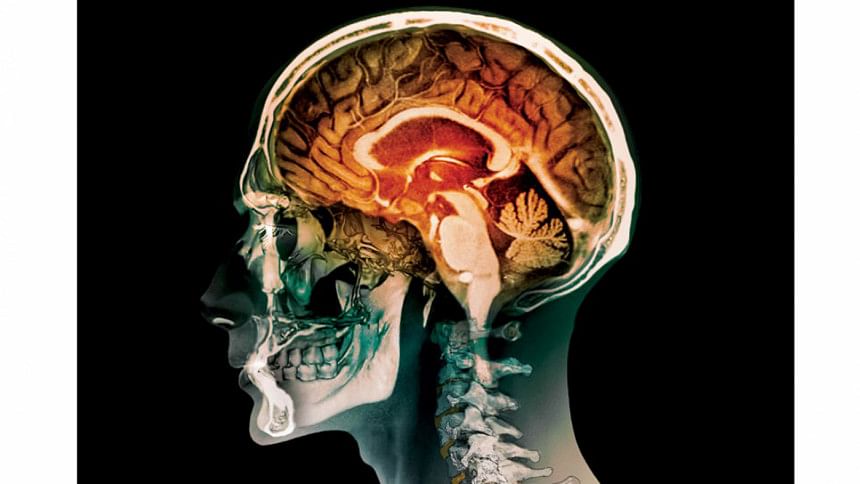Human brain’s ultimate barrier to open for first time

This is believed to be neuroscience's final frontier. Tiny bubbles will open the blood-brain barrier to sneak drugs into tumours – and we might treat Alzheimer's the same way, reports New Scientist.
Kullervo Hynynen is preparing to cross this final frontier in neuroscience. In July he will work with a team of doctors in the first attempt to open the blood-brain barrier in humans – the protective layer around blood vessels that shields our most precious organ against threats from the outside world.
New Scientist reports, If this is successful, the method would be a huge step in the treatment of pernicious brain diseases such as cancer, Parkinson's and Alzheimer's, by allowing drugs to pass into the brain.
The blood-brain barrier (BBB) keeps toxins in the bloodstream away from the brain.
It consists of a tightly packed layer of endothelial cells that wrap around every blood vessel throughout the brain. It prevents viruses, bacteria and any other toxins passing into the brain, while simultaneously ushering in vital molecules such as glucose via specialised transport mechanisms, reports New Scientist.
The downside of this is that the BBB also completely blocks the vast majority of drugs. Exceptions include some classes of fat and lipid-soluble chemicals, but these aren't much help as such drugs penetrate every cell in the body – resulting in major side effects.
"Opening the barrier is really of huge importance. It is probably the major limitation for innovative drug development for neurosciences," says Bart De Strooper, co-director of the Leuven Institute for Neuroscience and Disease in Belgium.
According to New Scientist, Hynynen, a medical physicist at Sunnybrook Research Institute in Toronto, Canada, thinks the answer lies in gas-filled microbubbles. These were discovered accidentally in the 1960s when radiologists noticed that tiny bubbles in blood made ultrasound images clearer. More recently, they have been investigated as a way to help treat hard-to-reach cancers.
Hynynen's trial will involve 10 people with a cancerous brain tumour. First, the volunteers will be given a chemotherapy drug that does not usually cross the BBB. They will then receive an injection of microbubbles, which will spread throughout the body, including into the blood vessels that serve the brain.
Next is a treatment called high-intensity focused ultrasound. The volunteers will wear a cap that contains an array of transducers that direct ultrasound waves into their brain. Just as the sun's rays can be focused by a magnifying glass, ultrasound waves can be concentrated inside the body to get the microbubbles to vibrate.
The vibrating bubbles will expand and contract about 200,000 times a second, which will force apart the endothelial cells that form the BBB. The idea is that this will allow the chemotherapy drug in the bloodstream to sneak through the gaps in the barrier and into any nearby tumour cells
The ultrasound will be on for a maximum of 2 minutes, during which time it will perforate the BBB in nine sites around each volunteer's tumour. To confirm that this happens, the team will inject a fluorescent marker and watch it move from the blood stream into the tumour using fMRI scans. Shortly after, the volunteers will have surgery to remove the tumour, which will be sampled to compare the concentration of the chemotherapy drug in areas zapped by ultrasound with those that remained unzapped.
The BBB starts to close almost immediately after the ultrasound is turned off, says Hynynen, and should be back to normal about 6 hours later. Although opening up the BBB to drugs also opens it up to unwanted toxins, animal experiments have shown few side effects and no long-term effects on behaviour or health.
"You're not exposing the brain to any more bacteria than you are when you do open brain surgery," says Hynynen. Importantly, the treatment is non-invasive and painless. "Theoretically, the patients could go straight home," says Hynynen.
"The treatment is non-invasive and painless. Theoretically, the patients could go straight home."
"Identifying effective – and most importantly safe and reversible – methods for opening the BBB has been a major goal in the development of neurological treatments for many years," says Eleanor Stride, who studies drug delivery at the University of Oxford. "This is very exciting news indeed. If the results can be replicated in people this will be a huge step forward for treating a wide range of diseases."
"Identifying effective and safe ways to open the blood-brain barrier has been a major goal for years."
For example, trastuzumab (sold as Herceptin) is an effective treatment for some breast cancers but it cannot cross the BBB to reach tumours that have metastasised and travelled to the brain, so opening the BBB could help. It could also make it feasible to produce highly tailored drugs for a whole spectrum of brain receptors, says De Strooper, meaning potential treatments for conditions such as schizophrenia or clinical depression.
Alzheimer's would be another possible target. In brain tissue grown in a dish, antibodies that cannot easily cross the BBB have been shown to wipe out the protein plaques that are characteristic of Alzheimer's.
"We think trials of these antibodies in humans failed because researchers haven't managed to get a high enough dose into the brain," says Hynynen. "So we hope to try these drugs in humans in the future, maybe as soon as a year, depending on how well this first trial goes."
One stumbling block might be what happens to the drugs once they are in the brain, says Matthew Wood at the University of Oxford, as most drugs won't spread between brain cells unaided. This could mean having to open up the BBB throughout the brain for diseases like Alzheimer's, where the damage is widespread, he says.
Hynynen doesn't envisage this being a big problem. "We have disrupted whole hemispheres in animals without any negative consequences," he says. In Alzheimer's you would most likely target areas which had the largest volume of plaques first – where the impact of the disease is greatest – and eventually zap the whole brain over several sessions. "It's a slow-progressing disease so you have lots of time to divide up the brain into sections, open them up one by one and let each section recover before moving on to the next area," he says.

 For all latest news, follow The Daily Star's Google News channel.
For all latest news, follow The Daily Star's Google News channel. 



Comments